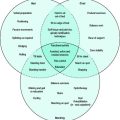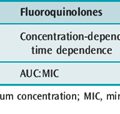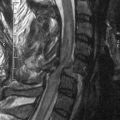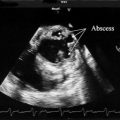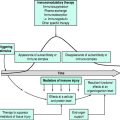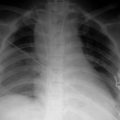Chapter 71 Abdominal and pelvic injuries
Although important abdominal injuries are present in only 16–27% of hospital trauma admissions,1 abdominal and pelvic injuries can represent up to 60% of missed diagnoses in preventable trauma deaths.2 Most abdominal and pelvic injuries are caused by blunt trauma; penetrating aetiologies account for 6–21% of cases, depending on the society concerned.1,3 Important considerations with abdominal and pelvic injuries are:
MECHANISMS OF INJURY
BLUNT INJURIES
Road crashes account for most abdominal and pelvic blunt injuries. Injuries may also result from falls, assaults and industrial accidents.1 Associated injuries are frequent, involving the thorax (most common), head and extremities. Seat belts and airbags reduce mortality in motor vehicle crashes (mainly by limiting brain injury), but are associated with more lower body injuries. Abdominal and pelvic injuries are more likely with vehicular side-on collisions, and when crashes result in a deformed steering wheel.4
PENETRATING INJURIES
Stab and gunshot wounds account for most penetrating injuries to the abdomen.
STAB AND LACERATION WOUNDS
Entry sites do not accurately predict the nature of deeper injury. Penetration of the thoracic cavity should be suspected with upper abdominal wounds; conversely, lower chest wounds may involve abdominal structures. Selective management of haemodynamically stable patients using investigation algorithms that accurately predict intra-abdominal injury has superseded mandatory laparotomy.5
GUNSHOT WOUNDS
Injuries depend on missile calibre, and its velocity and trajectory. Intra-abdominal, thoracic and multiple organ injuries and mortality are substantially greater than with stab wounds. Laparotomy should be performed in all cases with haemodynamic instability, peritonitis or a clinically unevaluable abdomen. A non-operative approach for solid organ injury6 carries the risk of missed bowel injury.
INITIAL TREATMENT AND INVESTIGATIONS
RESUSCITATION
Ensuring adequacy of airway, ventilation and oxygenation are immediate priorities. However, circulatory resuscitation should not delay surgery for uncontrolled haemorrhage.7 End-points for replacement of blood volume are controversial.8 If rapid surgical haemostasis is provided in penetrating trauma, delaying or limiting fluid resuscitation before surgery may improve outcome.9 Pneumatic antishock garments provide no benefit.7,10
CLINICAL ASSESSMENT
A full clinical examination (including the back) by experienced clinicians is most important. The mechanism of injury may direct attention to particular anatomical areas.4
Nevertheless, in conscious patients, serial assessments can accurately identify those with significant intra-abdominal pathology. In the presence of impaired consciousness,intellectual disability or spinal, chest or pelvic injury, clinical assessment is unreliable. Other more visually spectacular injuries may also divert attention from the abdomen.
Laparotomy is indicated on clinical grounds when there is:
In all other situations where clinical examination is inadequate, further investigations must be undertaken.11
PLAIN X-RAYS
A chest X-ray (preferably erect) is essential. It may demonstrate free intraperitoneal gas, herniation of abdominal contents through a ruptured diaphragm, or other abnormalities. Plain films of the abdomen are of no benefit. An anteroposterior pelvic X-ray is indicated for all victims of blunt trauma, except conscious patients with normal pelvis on examination.12
INVESTIGATIONS FOR OCCULT ABDOMINAL INJURY
ULTRASONOGRAPHY
Focused abdominal sonography for trauma (FAST) can be performed rapidly in the resuscitation room without compromising ongoing treatment. It requires significant training to achieve acceptable accuracy,13 and although highly specific, its sensitivity of around 85%14 is less than that of peritoneal lavage or CT in detecting free intra-abdominal fluid following either blunt15,16 or penetrating17 trauma. FAST can also identify pericardial fluid, but not hollow viscus injury or the nature of solid organ injury.16 FAST may reduce the need for other investigations,18 but the small but important false-negative rate must be considered in determining its role in abdominal assessment algorithms.
PERITONEAL LAVAGE
Diagnostic peritoneal lavage (DPL)19 is indicated in blunt trauma when there is haemodynamic instability or uncertain clinical findings, and in penetrating trauma when peritoneal breach is suspected.
Open and closed (percutaneous guidewire) methods are both satisfactory.20
If required in these situations (or with pelvic fractures), the supraumbilical open method should be considered. DPL undertaken early remains reliable in the presence of pelvic fractures.21 DPL detects intraperitoneal injury with up to 98% accuracy,19 but its high sensitivity can result in a significant non-therapeutic laparotomy rate. Cell counts of lavage effluent are more accurate than qualitative methods, but hollow viscus injury is difficult to detect. Generally accepted criteria for a positive DPL are shown in Table 71.1.
Table 71.1 Criteria for positive diagnostic peritoneal lavage
| Clinical | ||
COMPUTED TOMOGRAPHY (CT)
CT requires a still patient, a high-resolution scanner and experienced interpretation to match the sensitivity of peritoneal lavage. The value of enteral contrast is controversial.22 Cuts from the top of the diaphragm to the symphysis pubis following i.v. contrast are required. CT is particularly useful to assess the retroperitoneum and pelvic fractures, and to delineate the nature of abdominal injury (thus guiding non-operative management of some solid organ injuries). It may not detect all hollow viscus trauma, but multidetector row CT is more specific and sensitive for bowel injury.23 Magnetic resonance imaging offers no advantage over CT in evaluating acute abdominal trauma, and poses significant logistical problems.
CHOICE OF INVESTIGATION
LAPAROSCOPY
Diagnostic laparoscopy may be useful in the haemodynamically stable patient. It is good at visualising the diaphragm and identifying a need for laparotomy, but may miss specific organ injuries, particularly of the bowel. Laparoscopy appears best suited for the evaluation of equivocal penetrating wounds.25
LAPAROTOMY
Operative treatment of more severe injuries with difficult haemostasis can cause a lethal triad of hypothermia, acidosis and coagulopathy. A ‘damage control’ laparotomy26 with control of haemorrhage and contamination, intraperitoneal packing, elective re-exploration and removal of packs 24–48 hours later should be performed.
SPECIFIC INJURIES
SPLEEN
The spleen is the organ most frequently injured by blunt trauma. Injuries vary from a small subcapsular haematoma to hilar devascularisation or shattered spleen, but are rarely fatal with good medical care.27 Diagnosis may be delayed in mild trauma. When associated chest or neurological injuries are severe, minor splenic injury may not initially be detected unless further investigation is undertaken. Fractures of the lower left ribs are a common association. Minor trauma may cause splenic injury when the spleen is enlarged (e.g. from malaria, lymphomas and haemolytic anaemias).
Immediate splenectomy is indicated in patients with splenic avulsion, fragmentation or rupture, extensive hilar injuries, failure of haemostasis, peritoneal contamination from gastrointestinal injury or rupture of diseased spleen.27 However, overwhelming infection by encapsulated organisms, such as Pneumococcus, can occur early or late (even years) after splenectomy in 0–2% of individuals. It is a particular risk following splenectomy in children and young adults. Polyvalent pneumococcal vaccine (Pneumovax) and haemophilus and meningococcal vaccines should be administered following splenectomy.28
If associated abdominal injuries have been excluded, a non-operative approach can give splenic salvage rates of over 80%. Arterial embolisation can further reduce the need for laparotomy.29 Failure rates are higher with higher grade injuries.28
LIVER
The liver is the second most commonly injured organ after blunt abdominal trauma, and has been the most frequently missed injury in deaths from trauma.2 Diagnosis is made by laparotomy in unstable patients, or CT in stable patients. Injuries range from small subcapsular haematomas to major parenchymal disruption and laceration of hepatic veins or even hepatic avulsion.
CT assessment enables most patients to be managed without operation. Patients should be haemodynamically stable, have associated major abdominal injuries excluded, and be assessed repeatedly. Follow-up CT scans can show the resolution of injury, which typically takes 2–3 months. CT-guided percutaneous drainage, endoscopic retrograde cholangiopancreaticogram (ERCP) and angioembolisation can treat the complications of a non-operative approach such as bile leak, haemobilia, necrosis, abscess and delayed haemorrhage.28
If surgery is required, early determination of indications for a damage control approach is important. Peri-hepatic packing gives best haemostasis. Angiography may identify and treat uncontrolled arterial bleeding. Early complications of liver injury relate to the effects of hypoperfusion or massive blood transfusion. Late complications are usually associated with sepsis.30
GASTROINTESTINAL TRACT (GIT)
Injury to the GIT is more common following penetrating than blunt trauma. The very high likelihood of bowel injury in abdominal gunshot wounds should mandate laparotomy. Laparoscopy can be used to identify those with stab wounds for laparotomy when peritoneal violation cannot be excluded. Posterior stab wounds may damage retroperitoneal structures. CT examination with contrast enema may identify colonic injury better than clinical assessment or DPL.5
FAST or DPL may provide a general indication for laparotomy, but are not accurate in diagnosing isolated bowel trauma (especially of the duodenum) because of its retroperitoneal location.
CT is a sensitive indicator of free intraperitoneal air, but signs of duodenal perforation or haematoma are subtle, even with enteral contrast. Consequently, duodenal injury is often missed. A high index of suspicion should be maintained in patients with persistent abdominal pain and tenderness.31
Bleeding from mesenteric vessels is often self-limiting and may not require surgical control. However, vessel damage can cause ischaemia and infarction, and may require resection of affected bowel. Uncomplicated blunt or penetrating bowel injury can usually be managed by primary repair and anastomosis rather than colostomy.32 A faecal diversion procedure with delayed repair is indicated in significant peritoneal contamination.
PANCREAS
Blunt injuries to the pancreas require considerable force and are often associated with duodenal, liver and splenic trauma. CT is the most useful investigation. Acute hyperamylasaemia does not predict pancreatic or hollow viscus injury.33
Minor injuries require simple drainage and haemostasis. Severe injuries to the body and tail of the pancreas are best managed by distal pancreatectomy. Severe injuries involving the proximal pancreas and duodenum with intact ampulla and common bile duct can be treated by drainage alone if associated duodenal injury is simple to repair. Pancreaticoduodenectomy is required if there is disruption of the ampullary–biliary–pancreatic union or major devitalisation. Complications such as pancreatitis, fistula, abscess and pseudocyst are common.34,35
KIDNEY AND URINARY TRACT
Blunt injury to the urinary tract is more common than penetrating injury. Identification and treatment of other major injuries often take precedence. Gross haematuria should be investigated; CT is the examination of choice. Urinary extravasation may be missed unless a repeat scan 10–20 minutes after contrast injection is performed. Unless there is unexplained shock, microscopic haematuria does not require further investigation. Renovascular pedicle or ureteric injuries may not cause any haematuria. Most renal injuries resolve with expectant management. Lacerations involving the collecting system or injury to the renal pedicle usually require operative intervention, although restoration of renal function following long warm ischaemic times is unusual. If major renal injury is discovered at emergency laparotomy, intraoperative i.v. urography is prudent to ensure contralateral function and will identify urinary extravasation. Angioembolisation may be useful in controlling renal haemorrhage.36
Bladder rupture is commonly associated with pelvic fractures. Over 95% of patients have macroscopic haematuria. Retrograde cystography is the investigation of choice because CT has a high false-negative rate. Intraperitoneal bladder rupture requires operative repair and urinary drainage. Patients with sterile urine and extraperitoneal rupture can be managed with catheter drainage alone.37
DIAPHRAGM
Spontaneous healing does not occur, and all defects should be repaired. The risk of associated injuries in acute cases mandates an abdominal approach.38
BONY PELVIS AND PERINEUM
Radiography can confirm bony injury, but CT is required to identify associated intra-abdominal injuries (in the haemodynamically stable) and can assist in planning operative stabilisation. FAST has a significant false-negative rate with major pelvic fractures.39
Patients with haemodynamic instability and pelvic fractures must have intra-abdominal haemorrhage excluded. Early open supraumbilical DPL or FAST are the investigations of choice. If grossly positive, laparotomy should precede external fixation or angiography. If DPL is positive by cell count alone or FAST negative, the risk of life-threatening intra-abdominal haemorrhage is relativelylow, and achieving haemostasis for pelvic bleeding becomes the priority; CT and/or laparotomy should follow if the patient is still unstable.
RETROPERITONEAL HAEMATOMA
CT is the most useful investigation in the stable patient.
A central haematoma should be explored with proximal vascular control, because of the risk of pancreatic, duodenal or major vascular injury. A lateral or pelvic haematoma should not be explored, unless there is evidence of major arterial injury, intraperitoneal bladder rupture or colonic injury.41
TRAUMA IN PREGNANCY
Continuous cardiotocography (indicated at viable gestations) is the most sensitive test to detect obstetric complications, but is required for only 4 hours unless abnormalities are noted.42 Kleihauer–Betke tests to identify fetomaternal haemorrhage are not predictive of fetal or maternal morbidity.
SEPSIS
Prophylactic antibiotics for 24 hours are satisfactory for penetrating injuries. Intra-abdominal sepsis should be excluded if unexplained fever and/or neutrophil leukocytosis or multiple organ failure develops. Septic shock may represent a second shock insult to the trauma patient, leading to multiorgan dysfunction.
GASTROINTESTINAL FAILURE
GIT failure in various forms, ranging from stress ulceration and delayed gastric emptying to paralytic ileus, is a frequent occurrence. Prophylaxis against stress ulceration may be indicated. Enteral nutrition is associated with a lower incidence of sepsis following trauma.43 Feeding through a jejunostomy tube placed during surgery or radiologically in the ICU is usually feasible. Parenteral nutrition may be necessary in patients with severe bowel or retroperitoneal injuries.
RAISED INTRA-ABDOMINAL PRESSURE
Abdominal distension with raised intra-abdominal pressure may be seen in the critically injured as a consequence of haemorrhage, bowel oedema, ileus or surgical packs. This can have severe adverse effects on respiratory, cardiovascular and renal function.44 Alleviation is by abdominal decompression using interposed synthetic mesh45 or by leaving the abdomen open, with or without visceral packing. The abdomen is subsequently closed by staged repair as the distension resolves.
1 Cameron P, Dziukas L, Hadj A, et al. Patterns of injury from major trauma in Victoria. Aust N Z J Surg. 1995;65:848-852.
2 Anderson ID, Woodford M, de Dombal FT, et al. Retrospective study of 1000 deaths from trauma in England and Wales. BMJ. 1988;296:1305-1308.
3 Champion HR, Copes WS, Sacco WI, et al. The Major Trauma Outcome Study: establishing norms for trauma care. Trauma. 1990;30:1356-1365.
4 Yoganandan N, Pintar FA, Gennarelli TA, et al. Patterns of abdominal injuries in frontal and side impacts. Proceedings of the Annual Conference. Assoc Advance Automot Med. 2000;44:17-36.
5 Chiu WC, Shanmuganathan K, Mirvis SE, et al. Determining the need for laparotomy in penetrating torso trauma: a prospective study using triple contrast enhanced abdominopelvic computed tomography. J Trauma. 2001;51:860-868.
6 Demetriades D, Hadjizacharia P, Constantinou C, et al. Selective nonoperative management of penetrating abdominal solid organ injuries. Ann Surg. 2006;244:620-628.
7 Spahn DR, Cerny V, Coats TJ, et al. Management of bleeding following major trauma: a European guideline. Crit Care. 2007;11:414.
8 Roberts I, Evans P, Bunn F, et al. Is the normalisation of blood pressure in bleeding trauma patients harmful? Lancet. 2001;357:385-387.
9 Bickell WH, Wall MJ, Pepe PE, et al. Immediate versus delayed resuscitation for hypotensive patients with penetrating torso injuries. N Engl J Med. 1994;331:1105-1109.
10 Mattox KL, Bickell WH, Pepe PE, et al. Prospective MAST study in 911 patients. J Trauma. 1989;29:1104-1112.
11 Prall JA, Nichols JS, Brennan R, et al. Early definitive abdominal evaluation in the triage of unconscious normotensive blunt trauma patients. J Trauma. 1994;37:792-797.
12 Koury HI, Peschiera JL, Welling RE. Selective use of pelvic roentgenograms in blunt trauma patients. J Trauma. 1993;34:236-237.
13 Gracias VH, Frankel HL, Gupta R, et al. Defining the learning curve for the focussed abdominal sonogram for trauma (FAST) examination: implications for credentialling. Am Surg. 2001;67:364-368.
14 Lee BC, Ormsby EL, McGahan JP, et al. The utility of sonography for the triage of blunt abdominal trauma patients to exploratory laparotomy. Am J Roentgenol. 2007;188:415-421.
15 Hsu JM, Joseph AP, Tarlinton LJ, et al. The accuracy of focused assessment with sonography in trauma (FAST) in blunt trauma patients: experience of an Australian major trauma service. Injury. 2007;38:71-75.
16 Griffin XL, Pullinger R. Are diagnostic peritoneal lavage or focussed abdominal sonography for trauma safe screening investigations for haemodynamically stable patients after blunt abdominal trauma? A review of the literature. J Trauma. 2007;62:779-784.
17 Udobi KF, Rodriguez A, Chiu WC, et al. Role of ultrasonography in penetrating abdominal trauma: a prospective clinical study. J Trauma. 2001;50:475-479.
18 Ollerton JE, Sugrue M, Balogh Z, et al. Prospective study to evaluate the influence of FAST on trauma patient management. J Trauma. 2006;60:785-791.
19 Nagy KK, Roberts RR, Joseph KT, et al. Experience with over 2500 diagnostic peritoneal lavages. Injury. 2000;31:479-482.
20 Hodgson NF, Stewart TC, Girotti MJ. Open or closed diagnostic peritoneal lavage for abdominal trauma? A meta-analysis. J Trauma. 2000;48:1091-1095.
21 Mendez C, Gubler KD, Maier RV. Diagnostic accuracy of peritoneal lavage in patients with pelvic fractures. Arch Surg. 1994;129:477-482.
22 Tsang BD, Panacek EA, Brant WE, et al. Effect of oral contrast administration for abdominal computed tomography in the evaluation of acute blunt trauma. Ann Emerg Med. 1997;30:7-13.
23 Romano S, Scaglione M, Tortora G, et al. MDCT in blunt intestinal trauma. Eur J Radiol. 2006;59:359-366.
24 Gonzalez RP, Ickier J, Gachassin P. Complementary roles of diagnostic peritoneal lavage in the evaluation of blunt abdominal trauma. J Trauma. 2001;51:1128-1134.
25 Poole GV, Thomas KR, Hauser CJ. Laparoscopy in trauma. Surg Clin North Am. 1996;76:547-556.
26 Shapiro MB, Jenkins DH, Schwab CW, et al. Damage control: collective review. J Trauma. 2000;49:969-978.
27 Wilson RH, Moorehead RJ. Management of splenic trauma. Injury. 1992;23:5-9.
28 Spelman D, Buttery J, Daley A, et al. Guidelines for the prevention of sepsis in asplenic and hyposplenic patients. Int Med J. 2008;38:349-356.
29 Haan JM, Bochicchio GV, Kramer N, et al. Nonoperative management of blunt splenic injury: a 5-year experience. J Trauma. 2005;58:492-498.
30 Lee SK, Carrillo EH. Advances and changes in the management of liver injuries. Am Surg. 2007;73:201-206.
31 Hughes TM. The diagnosis of gastrointestinal tract injuries resulting from blunt trauma. Aust N Z J Surg. 1999;69:770-777.
32 Demetriades D, Murray JA, Chan L, et al. Penetrating colon injuries requiring resection: diversion or primary anastomosis? An AAST prospective multicenter study. J Trauma. 2001;50:765-775.
33 Boulanger BR, Milzman DP, Rosati C, et al. The clinical significance of acute hyperamylasemia after blunt trauma. Can J Surg. 1993;36:63-69.
34 Boffard KD, Brooks AJ. Pancreatic trauma – injuries to the pancreas and pancreatic duct. Br J Surg. 2000;166:4-12.
35 Krige JE, Beningfield SJ, Nicol AJ, et al. The management of complex pancreatic injuries. S Afr J Surg. 2005;43:92-102.
36 Santucci RA, Wessells H, Bartsch G, et al. Evolution and management of renal injuries: consensus statement of the renal trauma subcommittee. BJU Int. 2004;93:937-954.
37 Gomez RG, Ceballos L, Corburn M, et al. Consensus statement on bladder injuries. BJU Int. 2004;94:27-32.
38 Rosati C. Acute traumatic rupture of the diaphragm. Chest Surg Clin North Am. 1998;8:371-379.
39 Tayal VS, Neilsen A, Jones AE, et al. Accuracy of trauma ultrasound in major pelvic injury. J Trauma. 2006;61:1453-1457.
40 Bim WL, Smith WR, Moore EE, et al. Evolution of a multidisciplinary pathway for the management of unstable patients with pelvic fractures. Ann Surg. 2001;233:843-850.
41 Feliciano DV. Management of traumatic retroperitoneal haematoma. Ann Surg. 1990;211:109-123.
42 Mattox KL, Goetzl L. Trauma in pregnancy. Crit Care Med. 2005;33:S385-S389.
43 Kudsk KA, Croce MA, Fabian TC, et al. Enteral versus parenteral feeding. Effects on septic morbidity after blunt and penetrating abdominal trauma. Ann Surg. 1992;215:503-513.
44 Saggi BH, Sugerman HJ, Ivatury RR, et al. Abdominal compartment syndrome. J Trauma. 1998;45:597-609.
45 Torrie J, Hill AA, Streat SJ. Staged abdominal repair in critical illness. Anaesth Intensive Care. 1996;24:368-374.

